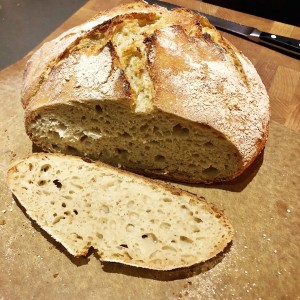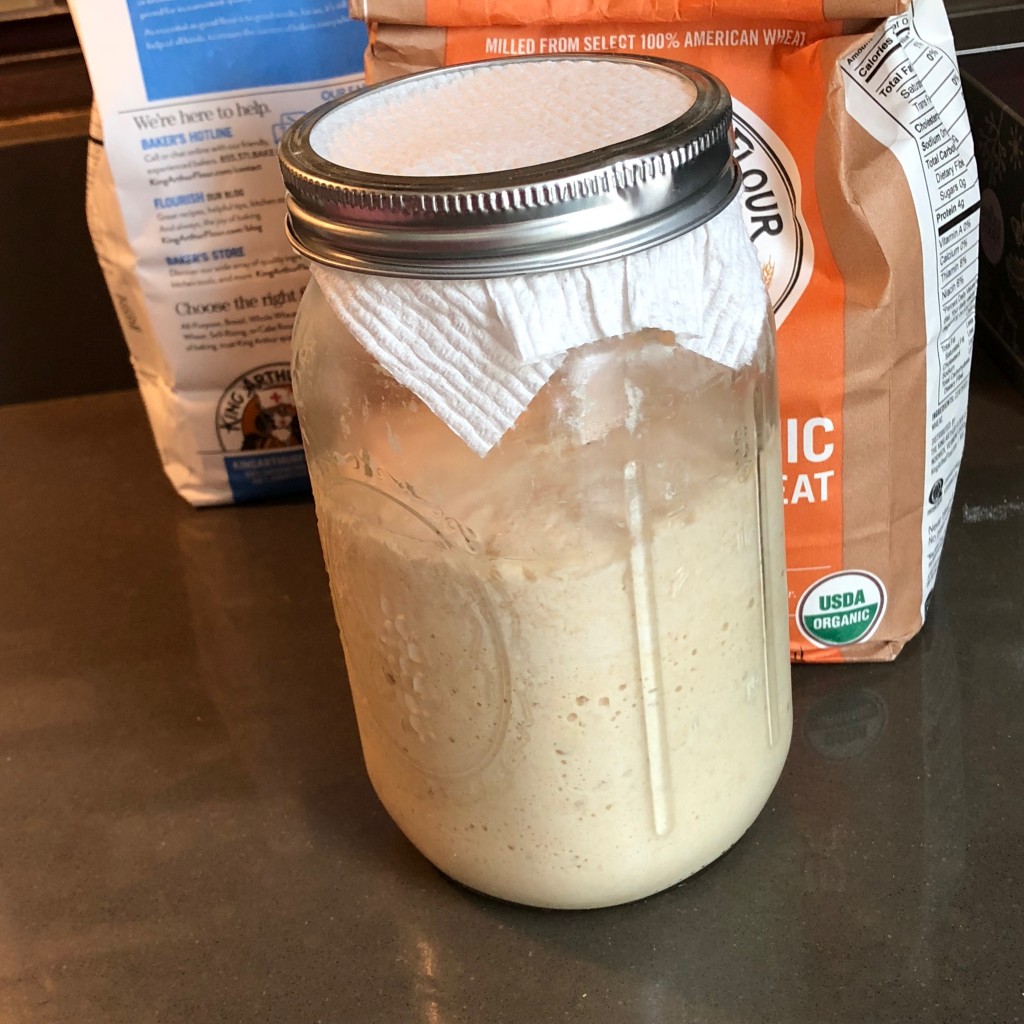A few years back I started making sourdough bread. The key to sourdough is growing your own yeast culture: starter. This starter is then used in place of store-bought instant yeast. The starter combined with a rustic style of fermenting the bread for 12-18 hours imparts a distinct sour flavor to the dough.
First you must create your sourdough starter
This takes 1-2 weeks letting flour and water sit out on the counter to allow the yeast to grow. Each day you will discard some of the mixture and replenish it with fresh flour (and water) for the microbes to feed on.
I like this King Arthur recipe for creating a starter. Kind Arthur also makes a variety of fantastic flour: sourdough starter recipe.
My first tip: bakers tend to think of flour by weight, not by volume. As a rough rule, 100 grams of flour is equivalent to 1 cup. My second tip: don’t fool yourself about how active your starter is. A thriving starter will more than double in size and will show air pockets. This starter has had only about an hour since feeding and it already has grown and is creating air pockets. It would rise to the shoulder of the jar if not retarded by placing in the fridge.
My final tip: You are probably not going to bake bread daily. I bake about once a week so in between I refrigerate my starter to slow down the growth of the yeast. To preserve your starter this way simply feed it and let it sit for 1 hour at room temperature. This reinvigorates the yeast. After an hour or so, refrigerate the starter. Repeat the feeding every week and your starter will always be ready to go. I have stretched this to 2-3 weeks but you will start to see brown liquid form on the top of the starter. This is an alcohol referred to as hooch. It indicates the yeast is starving, you should pour off the hooch and feed the starter. If you have not fed the starter recently or are not seeing grow during the hour after feeding you should not bake with the starter. It needs to be fed more frequently and left in a warmer (~72 F) spot.


